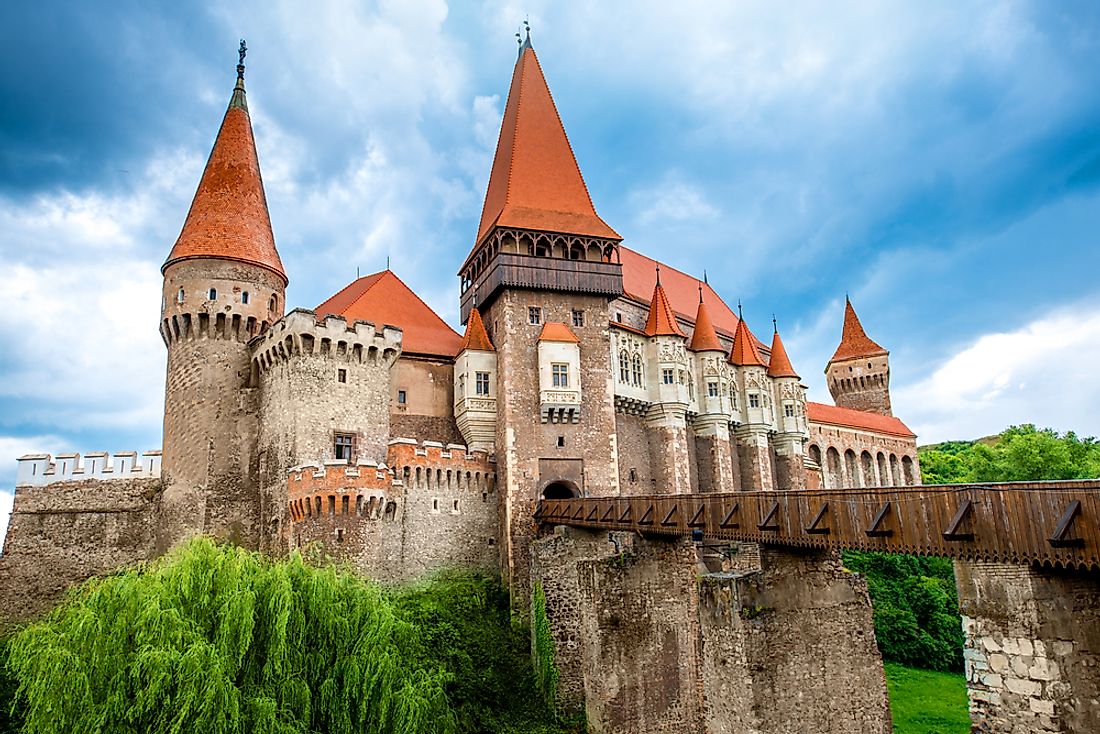Corvin Castle, Romania - Unique Places around the World

5. Description
Corvin Castle is a medieval castle located in southwestern Transylvania, in Hunedoara, Romania. The castle is known by several names in Romanian, namely as Castelul Huniazilor, Castelul Corvinilor, Castelul Corvineștilor, and Castelul Hunedoara. This Grimm Fairy tale-like structure has forty-two rooms and covers an area of about 75,347 square feet (7,000 square meters). Each of its towers rises to about 230 feet (70 meters) in height. Within its massive walls is housed the Museum of Hunedoara and the Museum of the Corvin Castle. A number of specialists in the fields of Medieval History and Archaeology consider Corvin to be the best kept medieval monument in southeastern Europe.
4. Tourism
Corvin Castle is one of Romania’s most popular tourist sites. The castle museum director recorded about 290,000 visitors in 2015, which was itself a significant increase as compared to the figures for the previous year. People come not only for the unique experiences of walking across the drawbridge and through its exhibits in the stone rooms, but also for the special cultural events held there, such as the Opera Nights Festival in the summer. A new museum dedicated to Medieval weaponry, to be called the Casa Breslelor, will be placed in the courtyard of the castle, and promises to be a lively educational experience. The entrance price of 5 Romanian Lei for children and students, and 20 Lei for adults, makes a trip here an affordable and worthwhile visit. Hunedoara and the castle can be easily reached by car and by public buses from any of Romania’s major cities.
3. Uniqueness
Corvin Castleis one of the most beautiful monuments of Gothic architecture in Romania and was listed among the top "10 Fairy Tale Destinations" in Europe. The legends surrounding the castle also add mystery to the place. The "Legend of the Raven", which tells a story of battles, passion, illegitimate sons, and noble inheritance, is derived from the family crest of Iancu (or Ioan) of Hunedoara, the Fifteenth Century owner of the castle. The "Legend of the Well" tells the story of the castle’s small courtyard well and how supposedly the Iancu promised freedom to three Turkish prisoners if they dug a well into the ground and found water. After 15 years, and the death of the Iancu, they succeeded, but the Iancu’s wife refused to grant them their promised release. In their anguish, the prisoners were said to have carved the inscription on the inside of the well: “here wrote Hassan, slave of the Ghiauri (Turkish moniker for Romanians) in the city by the church.”
2. History
Corvin Castle was built in the Fourteenth Century atop the ruins of a former Roman camp. It was given as a gift by King Sigismund I of Luxemburg to Voicu Hunyadi, the father of the Iancu of Hunedoara, in 1409. On inheriting the castle in 1440, the Iancu modernized and strengthened the fortifications. His son, Matei Corvin, built a Renaissance style wing, including paintings illustrating noble life. Significant changes to the building occurred between 1618 and 1623, when the Transylvanian prince Gabor Bethlen constructed two additional floors in the southern wing and one in the north wing of the castle. Corvin Castle was a victim to fire various times, and saw three major restorations, one in the 1870s, another between 1965 and 1970, and again from 1993 to 1995. Vlad the Impaler was never imprisoned here, as some have claimed. In fact, Matei Corvin had him imprisoned in Vesegrad, Hungary instead.
1. Threats
Corvin Castle is in a constant battle against the affects of weather and time. However, administrators are drawing in European funds totaling 10 million Euros for rehabilitating and conserving the castle building. Up-and-coming restoration efforts will also include furnishing the rooms with period pieces, and redesigning the gardens to include an amphitheater. The castle has already been the site of various feature films and documentaries, further increasing its prestige and worldwide renown, and subsequently more attention given to the importance of its conservation. Corvin's administration hopes to draw even more tourists to increase its revenues and popularize the castle to foreign tourists.







